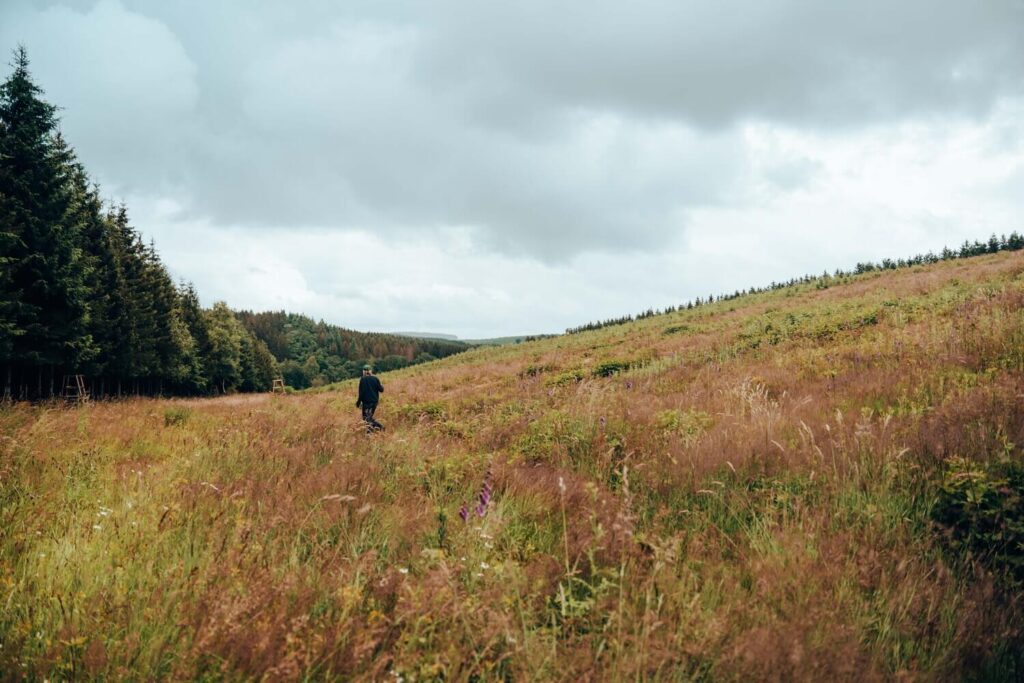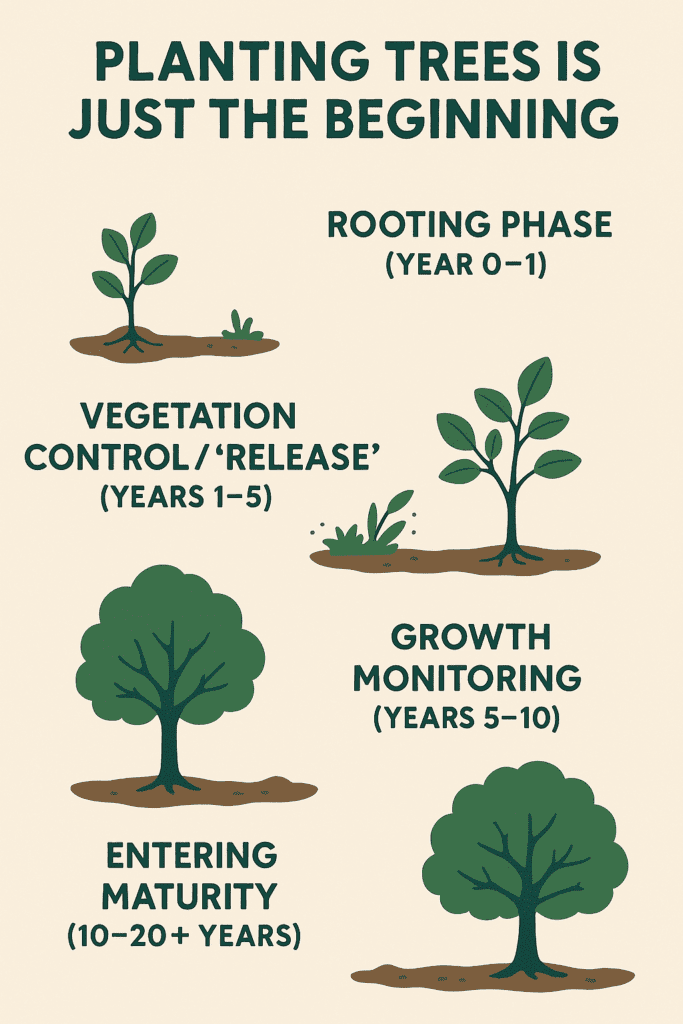A young forest doesn't look like a forest... yet
When you look at a freshly planted forest, you might expect to see tall trees, dense shade, a vibrant understory… But instead, you’re probably seeing something that feels a bit messy, too open, or even unfinished. And that’s completely normal.
What you’re actually seeing is nature at work, in its early stages. Unlike a garden, where everything is planned, trimmed, and arranged by human hands, a forest grows on its own terms. It might look disorderly at first, but this apparent chaos is what allows life to take hold and flourish.
Every forest starts somewhere. In its early years, a forest is in what we call a “pioneer phase.” It’s a transition stage, where grasses, herbs, shrubs, and all sorts of life forms prepare the ground for the trees to rise. It doesn’t yet look like the forest you imagine, but it’s on its way.

What you see is a living worksite
A few years from now, you’ll begin to see the canopy forming, shade deepening, and biodiversity settling in. But that takes time, and can’t be rushed.
In a young forest, different layers of vegetation begin to appear. The two main ones are:
- The herbaceous layer: low-growing plants like grasses, ferns, wildflowers, and mosses.
- The woody layer: shrubs and trees, including the forest’s main species.
Herbs vs. trees? Not always a battle
It’s often assumed that herbaceous plants compete with young trees and slow down their growth. That can happen, but it’s not a hard rule. In fact, herbs can actually benefit trees in many cases. Here’s why:
- Different rooting zones: Herbs tend to have shallow roots, while trees send their roots deeper. They’re often tapping into different water and nutrient zones, which reduces direct competition.
- Natural protection: Ground vegetation helps protect the soil from erosion and drying out. It also keeps the microclimate cooler and can limit the spread of more aggressive plants like brambles or invasive ferns.
- Feeding the soil: As herbs die back and decompose, they create organic matter. That feeds soil microbes and other life forms that ultimately help support healthy tree growth.
- Boosting biodiversity: A diverse herb layer attracts beneficial insects, like pollinators and natural predators of pests — helping to balance the forest ecosystem.
So no, herbaceous plants aren’t enemies of trees. When well managed, they play a valuable role in the early development of a forest. That’s why today’s forestry practices often aim to work with natural dynamics, instead of clearing everything out.

After planting: what happens next?
Planting trees is just the beginning. For a forest to become healthy and self-sustaining, it needs a little guidance during its early years. Here’s how that journey unfolds:
1. Rooting Phase (Year 0–1)
Young seedlings are getting used to their new environment, soil, light, wind, and wildlife.
The focus is on monitoring: checking for water stress, damage from animals, or high mortality. In some places, mulching or tree shelters might help protect the plants.
2. Vegetation Control / “Release” (Years 1–5)
At this stage, competing plants (like tall grasses or brambles) can overwhelm young trees.
Foresters step in with light maintenance: often just a gentle clearing around each seedling (30–50 cm radius). The goal is to give the tree space and light, not to strip the land bare, but to help nature find its balance.
This is typically done once or twice a year, depending on how fast the competing vegetation grows.
3. Growth Monitoring (Years 5–10)
Trees are now taking the lead. Some shoot up quickly, others establish more slowly.
Light thinning might be done to reduce overcrowding. Biodiversity is also closely observed, birds, fungi, insects start to appear. The role here is to observe and support, not control.
4. Entering Maturity (10–20+ years)
The canopy closes, shade returns, and a true forest floor begins to develop.
The trees have found their place. The forest is becoming stable, diverse, and increasingly self-managed.

Forest & wildlife: finding balance
A young forest is also part of a larger ecosystem, one that includes wildlife like deer, rabbits, or wild boar. It’s normal for some young plants to be nibbled or browsed. But not every bite means an emergency. A broken twig or a missing bud doesn’t always require plastic tubes, fencing, or other artificial protection.
Instead of rushing to protect every single plant, we encourage a more balanced approach: observe first, act later. If browsing becomes truly excessive and threatens the long-term regeneration, then yes, targeted replanting or selective protection can be considered. But we don’t need a 100% survival rate. That’s not how forests work. Natural selection, where the strongest or best-placed individuals thrive, is part of building a resilient, adaptive woodland.
In summary
A young forest isn’t chaotic, it’s becoming. What looks rough or random today is actually the foundation for long-term life. Each plant, each layer, each stage has a role to play. What it needs most? Time, care, and patience, not perfection.









